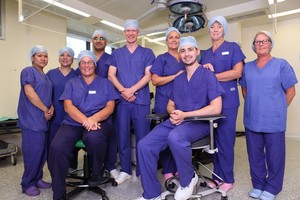
A Guide to Adult Squint Surgery
What is a squint?
Squint is the term used when the eyes do not look in the same direction. Most commonly one eye either turns in or out. Occasionally one eye may be higher than the other.
If the eyes are not looking in the same direction then they are sending different signals to the brain and this can cause double vision.
Why do squints happen?
A squint can occur for a number of different reasons including:
- Damage to the muscles controlling the eye
- Damage to the nerves controlling the eye muscles
- Poor development of, or damage to, the eye muscle control centres in the brain
- Poor vision in the eye can stop the brain being able to keep the eyes together. This occurs in adults who have had a squint as a child
Why are squints important?
A large squint can be a cosmetic problem. It can also cause double vision which can be very disabling. Double vision may also mean that you cannot drive.
Can squints be treated?
Many squints can be treated, though that treatment may vary depending on the type of squint:
- If the squint comes and goes then it may be advisable to watch and see if it gets any worse over time.
- Sometimes it is possible to treat the squint with glasses or exercises.
- If glasses or exercises are not effective then it may be necessary to consider an operation to adjust the muscles which control the eye.
During your consultation a full assessment of your eye and vision is performed to identify the cause of the squint and plan treatment appropriately.
What happens prior to surgery?
The angle of the squint needs to be measured and the movement of each affected muscle assessed. This is often done with the help of an orthoptist. The amount the eyes are working together is also assessed.
Your general health will also be discussed to ensure you are fit for a general anaesthetic.
Are there any risks?
Although most squint operations successfully straighten the eyes all surgery carries some risk and squint surgery is no different. There can be some bruising on the eye which can make it look red for about six to eight weeks. More significantly:
- Under or overcorrection of the squint can occur. Overcorrection can occasionally lead to double vision, which if persistent may require further surgery.
- Loss of vision - very rare (less than 1:1000), the vision in the operated eye can be made worse. This may be caused by bleeding inside the eye or infection.
- Even if the eye position is not satisfactory initially it often settles within the first few weeks. If it does not then further surgery can be performed.
Adjustable stitches
In some adults it may be more accurate to use adjustable stitches. The doctor will tell you if this is necessary. The operation is performed while you are under a general anaesthetic and the stitch is tied in a bow at the end of the operation. You are then woken up and the eyes measured. If the eyes are not straight it is possible to alter the muscle position while you are awake, using some eye drops to numb the eye. This makes the operation more accurate and is most commonly used when people have already had a previous squint operation.
What happens on the day of surgery?
You will be seen by the anaesthetist who will discuss the anaesthetic with you. This will be a general anaesthetic so you will be asleep.
One or both eyes are operated on and the muscles will be either shortened or moved to a new position to straighten the eyes.
What happens after surgery?
You can go home once you have woken up properly, which is usually two to four hours after the operation. The eye will feel gritty for around three to five days and may well look pink after surgery for up to three weeks. You will be asked to use eye drops for this length of time. A clinic appointment will be made for a few weeks after the operation to assess the eye is healing well. The exact position of the eye will be fully assessed at three months after the operation.

